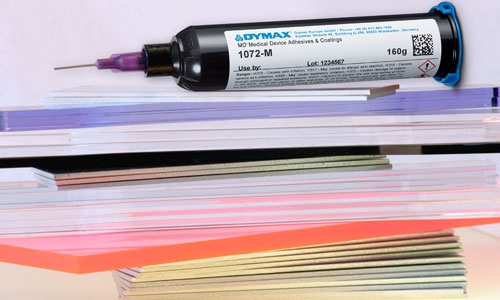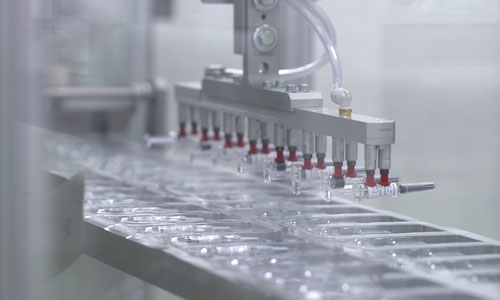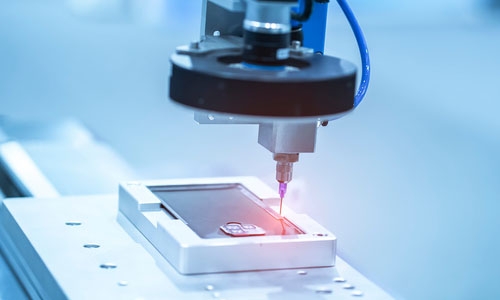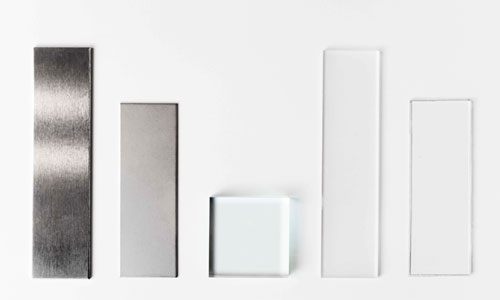Comprenda las diferencias y aplicaciones de las distintas tecnologías adhesivas
Al seleccionar el mejor adhesivo para su aplicación, Adhesivos curables por luz Los adhesivos a menudo se destacan por sus tiempos de curado rápidos, su versatilidad y su respeto por el medio ambiente. Sin embargo, cada tipo de adhesivo (ya sean epoxis, uretanos, siliconas, termofusibles, adhesivos a base de solventes o cianoacrilatos) tiene propiedades únicas que pueden convertirlo en una mejor opción según sus requisitos específicos. A continuación, presentamos una comparación completa para ayudarlo a elegir el mejor producto para su proyecto.
Adhesivos curables por luz frente a epoxis monocomponentes
Velocidad de curado: Los adhesivos curables con luz se curan en 1 a 30 segundos, mientras que los epóxicos de un solo componente requieren entre 5 y 60 minutos en un horno de curado por calor.
Vida útil y almacenamiento: Los adhesivos curables con luz generalmente ofrecen una vida útil más larga y un almacenamiento a temperatura ambiente, a diferencia de los epóxicos, que pueden necesitar refrigeración y tienen una vida útil más corta.
Pegado de sustratos opacos: Los epóxicos se curan independientemente de la exposición a la luz, lo que los hace ideales para sustratos opacos.
Resistencia química: Los epóxicos se prefieren en entornos químicamente agresivos, mientras que los adhesivos curables con luz se adaptan a necesidades de resistencia química moderada.
¿Cuál elegir? Adhesivos curables con luz para mayor velocidad, facilidad y mayor vida útil; epoxis monocomponentes para materiales opacos y exposición química extrema.
Adhesivos curables por luz frente a epoxis de dos componentes
Curado y facilidad de dispensación: Los adhesivos curables con luz proporcionan un curado rápido sin necesidad de mezclar, a diferencia de los epóxicos de dos partes que requieren mezclarse y pueden tardar hasta varias horas en curarse.
Ciclos de purga: Los epóxicos de dos partes requieren ciclos de purga que generan residuos peligrosos, mientras que los adhesivos curables con luz no, lo que los hace más respetuosos con el medio ambiente.
Pegado de sustratos diferentes: Los adhesivos curables con luz unen una variedad de sustratos, mientras que los epóxicos generalmente son más adecuados para aplicaciones resistentes a los químicos.
Vida útil de la olla: Los adhesivos curables con luz son de un solo componente y permanecen estables hasta la exposición a la luz, por lo que no tienen vida útil, mientras que los epóxicos de dos partes podrían tener una vida útil de entre 30 y 60 minutos.
¿Cuál elegir? Adhesivos curables con luz para una aplicación rápida, limpia y con un mínimo desperdicio; epoxis de dos partes para resistencia química y fuerza.
Adhesivos curables por luz frente a cianoacrilatos
Velocidad de curado: Los adhesivos curables con luz curan completamente en segundos con luz UV, mientras que los cianoacrilatos solo requieren una fijación de 10 a 60 segundos.
Resistencia al impacto: Los adhesivos curables con luz ofrecen opciones desde flexibles a rígidos, mientras que los cianoacrilatos son generalmente frágiles después del curado.
Resistencia a la temperatura y la humedad: Los adhesivos curables por luz soportan temperaturas extremas mayores y ofrecen mejor resistencia a la humedad.
¿Cuál elegir? Adhesivos curables con luz para versatilidad y durabilidad; cianoacrilatos para aplicaciones rápidas que no requieren equipo.
Adhesivos curables por luz frente a siliconas monocomponentes
Resistencia a la temperatura: Las siliconas soportan temperaturas más altas, mientras que los adhesivos curables con luz son mejores para aplicaciones de ritmo rápido que necesitan manipulación instantánea.
Pegado de sustratos opacos: Las siliconas se adhieren bien a los sustratos opacos sin luz, a diferencia de los adhesivos curables con luz.
Seguridad del trabajador y del medio ambiente: Los adhesivos curables por luz no contienen isocianatos y generan residuos peligrosos mínimos .
¿Cuál elegir? Adhesivos curables con luz para un curado rápido, seguridad ambiental y facilidad; siliconas para altas temperaturas y pegado de sustratos opacos.
Las líneas de montaje automatizadas de alta velocidad son ideales para MATERIALES DE CURADO CON LUZ de curado rápido.
Adhesivos curables por luz frente a uretanos de dos componentes
Facilidad de dispensación y residuos peligrosos: Los adhesivos curables con luz no requieren mezcla y no contienen isocianatos, mientras que los uretanos de dos partes necesitan mezclarse y producen desechos peligrosos.
Pegado de sustratos opacos: Los uretanos unen sustratos opacos de manera efectiva sin exposición a la luz.
Costo del material: Los uretanos tienen un costo más bajo por libra, pero los adhesivos curables con luz son ideales para una aplicación rápida y limpia.
Vida útil de la olla: Los adhesivos curables con luz son de un solo componente y permanecen estables hasta la exposición a la luz, por lo que no tienen vida útil, mientras que los uretanos de dos partes podrían tener una vida útil de entre 30 y 60 minutos.
¿Cuál elegir? Adhesivos curables con luz para una pegado fácil y respetuosa con el medio ambiente; uretanos de dos partes para aplicaciones duraderas y económicas.
Los materiales de un solo componente se dispensan fácilmente para un procesamiento rápido.
Adhesivos curables por luz frente a adhesivos termofusibles
Temperatura y durabilidad de la unión: Los adhesivos curables con luz funcionan bien en distintas temperaturas, mientras que los termofusibles se debilitan a temperaturas altas y bajas.
Claridad y precisión de unión: Los adhesivos curables con luz ofrecen opciones ópticamente transparentes y están disponibles en varias viscosidades, a diferencia de los adhesivos termofusibles, que pueden ser fibrosos y opacos.
Pegado de sustratos opacos: Los adhesivos termofusibles no dependen del curado con luz, lo que los hace efectivos para sustratos opacos.
¿Cuál elegir? Adhesivos curables con luz para uniones versátiles, fuertes y transparentes; adhesivos termofusibles para materiales opacos y aplicaciones de menor costo.
Adhesivos curables por luz frente a adhesivos a base de disolventes
Seguridad del trabajador e inflamabilidad: Los adhesivos curables con luz no inflamable y tienen poco olor, mientras que los adhesivos a base de solventes pueden ser altamente inflamables y requieren ventilación.
Flexibilidad de bonos y relleno de brechas: Los adhesivos curables con luz se adaptan a espacios grandes y unen sustratos diferentes, mientras que los adhesivos a base de solventes son menos efectivos para estas aplicaciones.
¿Cuál elegir? Adhesivos curables con luz para seguridad, cumplimiento ambiental y relleno de huecos; adhesivos a base de solventes para uniones rápidas y rentables en sustratos opacos.
Los adhesivos curables por luz son adecuados para pegado sustratos diferentes.
Reflexiones finales: ¿Qué química es mejor?
La elección del adhesivo más adecuado depende de las necesidades específicas de su proyecto.
Los adhesivos curables son los mejores para proyectos que necesitan tiempos de curado rápidos, alta claridad, estabilidad de temperatura, relleno de espacios y manipulación respetuosa con el medio ambiente. Son ideales en entornos de alto rendimiento que requieren precisión.
Las químicas alternativas proporcionan beneficios que los adhesivos curables con luz pueden no ofrecer.
Los epoxis y uretanos son ideales para aplicaciones resistentes a los productos químicos, sensibles a los costos o de alta temperatura, especialmente con sustratos opacos, y los cianoacrilatos son útiles para uniones rápidas sin equipo especializado. Para proyectos que requieren estabilidad a alta temperatura o la pegado de materiales opacos y no sensibles al calor, las siliconas y los adhesivos termofusibles son la mejor solución. Los adhesivos a base de solventes son adecuados para uniones rápidas y asequibles donde se implementan medidas de ventilación y control de la inflamabilidad.
Al comprender las fortalezas y limitaciones de cada adhesivo, es mucho más fácil tomar una decisión que se ajuste al rendimiento, la durabilidad y los requisitos de seguridad de su aplicación.




